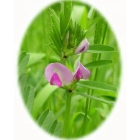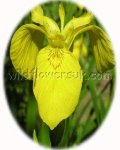 | ||
Perfect for pollinators Common Vetch -vicia sativa – grows best within dry grassland and along hedgerows. Unlike many other wildflowers it will establish quite well on fertile soils where there is plenty of sunlight. Common Vetch is a rambling species with a soft mauve flower that appears from April to September. Plants typically grow from 6 inches to as much as 4 feet in height and draw a wide range of insects such as Bees, and Butterflies. Common Vetch looks best growing with other meadow plants that flower in early to mid summer such as Oxeye daisies, Black Knapweed, Meadow Cranesbills and Field Scabrous. How to grow Common Vetch Seeds Common Vetch seeds are best sown directly outside into grassland, where they are to flower, Germination can be improved by lightly rubbing the seeds between 2 sheets of sandpaper. This is known as scarification and helps break down the seed’s tough outer shell. Common Vetch seeds usually germinate readily.. RHS Perfect for Pollinators. The RHS Perfect for Pollinators mark is only given to plants that support pollinating insects in gardens. Bees, butterflies, moths, hoverflies and many others visit flowers to feed on nectar and pollen; while doing so they transfer pollen and increase seed set and fruit development. Find out more at: rhs.org.uk/plants To discover more plants for Bees, simply enter the word "pollinators" into the search box above. To buy Common Vetch seeds To purchase Common Vetch seeds, please select a quantity above and click add to cart. To ensure the best chance of success, we sell all of our wildflower seeds by weight, which ensures each wildflower seed packet contains a good quantity of seeds. The recommended sowing rate is 1 gram per square metre, and the number of Common Vetch seeds per gram is approx. 17. All of our Wildflower seed packets contain seeds of Native British provenance. Summary type - annual, colour - Purple, height - 50 to 75cms, flowering months - April, May, June, July, August, September, habitat - Semi-Shade (Orchards, Hedgerow, Banks, Open Woodland), Dry Grassland (clay, loam), Very dry Sandy Soil, Bare, Open Ground (eg Arable field margins, disturbed, waste ground), Attracts Bees and Butterflies | ||
Printed 13/07/2025 08:33:38
st106_1 type annual colour purple height 50 to 75cms flowers april may june july august september habitat semi shade orchards hedgerow banks open woodland dry grassland clay loam very dry sandy soil bare open ground eg arable field margins disturbed waste ground attracts butterflies rhs perfect for pollinators pollinating insects bees butterflies moths hoverflies





 added to basket
added to basket